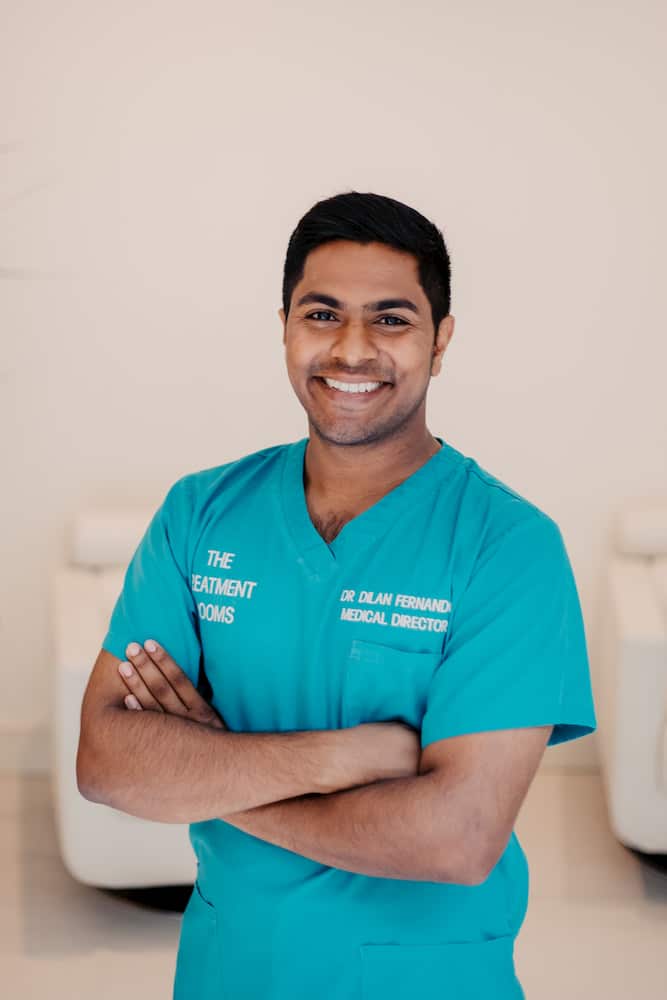A hair transplant involves a multitude of tiny incisions being made in the scalp. For some people, this might be a scary thought. In the UK, around 10 million people are believed to have phobias. Up to one in six adults suffer from some type of trypophobia — an aversion to, or fear of, clusters of small holes.
In this article, we’ll address any concerns you may have about a hair transplant if you are struggling with trypophobia. You’ll find information including what trypophobia is, how it links to hair transplants and tips on how to manage it.
What is trypophobia?
Trypophobia (fear of holes) is a fear of patterns of closely packed holes or bumps. Although trypophobia is not recognised as an official diagnosis, the condition has been widely discussed on online platforms and is considered by some experts to be a type of anxiety disorder.
The symptoms most commonly associated with this condition are distress, and even disgust when looking at surfaces that have clusters or patterns of small holes.
Some sufferers have also reported a feeling of helplessness, while others have skin-related reactions including itchiness and goosebumps. Dizziness, shortness of breath, sweating and trembling are other associated reactions.
What is trypophobia caused by?
Research into trypophobia is limited, and at present, its exact cause is unknown. However, several trypophobia triggers have been identified. These include:
- Honeycombs
- Sponges
- Sunflowers
- The soles of some shoes
- Bread or bagels covered in seeds
- Fruits with small seeds, such as strawberries or kiwis
Adverse reactions have also been reported from patterns on the skin of animals, including snakes, lizards and other reptiles, as well as certain types of imagery featuring holes or bumps.
Trypophobia and hair transplant holes
If you suffer from trypophobia, you may also have hair transplant trypophobia. An FUE hair transplant involves the creation of small holes using tiny incisions with punches of a special device. In people with trypophobia, this could lead to fear, discomfort or disgust.
Surgeons use a handheld micromotor device to extract hair follicles from the donor area of the scalp. This part of the procedure will create small holes, with size varying according to the size of the device used by the surgeon. Most surgeons will use a punch with a diameter in the region of 0.85mm to 0.95mm. These small holes at the back and sides of the head can trigger trypophobia, especially in the first 2-4 days after surgery when they are visible. After they have healed they shouldn’t trigger the fear of small hole clusters again.
The recipient area of the scalp — the balding regions where the grafted hair follicles will be placed — also requires the creation of tiny holes, into which the extracted follicles will be inserted. These you shouldn’t see after having a hair transplant so having trypophobia won’t be an issue for patients looking at where the hairs have been inserted.
How to deal with hair transplant trypophobia
If you have trypophobia, you may be recommended therapy to treat the condition:
- Cognitive behavioural therapy (CBT) – can help you deal with trypophobia, managing the fear and anxiety the phobia may cause. At CBT sessions, you will work with a therapist to alter the thoughts and actions that are causing your trypophobia symptoms. By gaining an understanding of how your thoughts lead to trypophobia symptoms, you can modify your thinking patterns.
- Exposure therapy – this form of therapy challenges you to face your phobia in a safe and supportive space. Exposure therapy can help you to alter the way you react to trypophobia triggers, minimising the fear, anxiety and distress when you encounter these triggers. You may be shown videos of hole patterns or clusters while you are helped to manage your response. The level of exposure will typically be increased until you hold or touch an object that may cause trypophobia triggers, such as a sponge.
- Medication – can be prescribed by your doctor if your trypophobia is related to a mood disorder such as depression or an anxiety disorder. If you have trypophobia and anticipate being in a situation that could trigger a reaction — such as having a hair transplant — you may be prescribed anti-anxiety medication to help you. Even if you don’t have trypophobia, sedative medication may be prescribed for a hair transplant.
Aside from therapy, there are other methods you can use to help ease trypophobia symptoms. Breathing exercises can help to calm both your body and your mind. Deep breathing is able to slow down your heart rate and relax you. For example, the box breathing technique involves repeatedly exhaling slowly and counting to four before inhaling slowly and counting to four.
You may also like to try meditation, which can reduce your anxiety and soothe your nerves.
Should someone with trypophobia avoid getting a hair transplant?
If you have this condition, you might be concerned that a hair transplant might not be suitable for you.
However, it is still possible to have a hair transplant if you have trypophobia. There are several ways (including those outlined in the section above) that you can overcome feelings of distress, fear and anxiety that the condition may bring about.
One of the ways our surgeons can help is by advising that the bandage at the back and sides of your head is kept on for longer. This is where the tiny numerous holes will be present that can trigger trypophobia. By covering it for longer you can avoid seeing the area or having others see the area who are affected by trypophobia.
By considering the best plan to tackle trypophobia — such as therapy, stress management, medication or specific aftercare instructions — you may be able to tackle trypophobia symptoms and have a hair transplant. Choosing an experienced surgeon at a reputable clinic can help ensure trypophobia is not triggered after a hair transplant.
Book a consultation
The highly-experienced surgeons at The Treatment Rooms London use the latest techniques with the most advanced tools to perform hair transplants. For this reason, you can rest assured that the holes which are created during the procedure are tiny and will take less time to heal than larger incisions. This means there is a lower chance the hole produced by your hair transplant will trigger trypophobia symptoms.
Why not book a consultation with The Treatment Rooms London to discuss any concerns you might have related to a hair transplant? Get in touch today — call us on 020 8706 0076 or use our contact form.
Sources
Share:
Authored by
Reviewed by
Book a Consultation
Related Blogs
Does Hair Dye Cause Hair Thinning? Understanding the Risks and Facts
July 8, 2025
Have you noticed more hair loss after dyeing your hair? The ingredients in some dyes can be…
When Can You Safely Wear a Beanie After a Hair Transplant?
July 3, 2025
Quick Summary Cap Recommendations: Light, breathable caps, such as snapbacks or trucker hats, are advisable if you need…
Castor Oil (Ricino Oil) for Hair Growth: Benefits, Uses & How to Apply for Maximum Results
June 26, 2025
Castor oil, also known as Ricino oil, is extracted from the Castor bean plant (Ricinus communis). During…
What is a Hair Transplant? How it Works, Success Rate & What to Expect
June 23, 2025
Hair transplantation is a cosmetic surgical procedure that restores hair by moving healthy follicles from one part…
John Cena Hair Transplant
May 14, 2025
John Cena, a common household name, is a figure who has effortlessly straddled the worlds of professional…
Kyle Walker Hair Transplant: Before, After, and His New Hairline
May 12, 2025
Kyle Walker is known for his defensive skills at Tottenham Hotspur, Manchester City, and in the England…
Celebrity Hair Transplants: Full Before and After Analysis
May 8, 2025
Elon Musk Hair Transplant Elon Musk, the billionaire behind Tesla and SpaceX, is well-known for his innovations…
Lewis Hamilton Hair Transplant: Before, After, and His New Hairline
May 7, 2025
As a top-class racing driver, Hamilton is used to wearing a race helmet. While this does protect…
James Nesbitt Hair Transplant: Before, After, and His New Hairline
May 6, 2025
James Nesbitt, the Northern Irish actor famed for his role as Adam Williams in the British comedy-drama…











